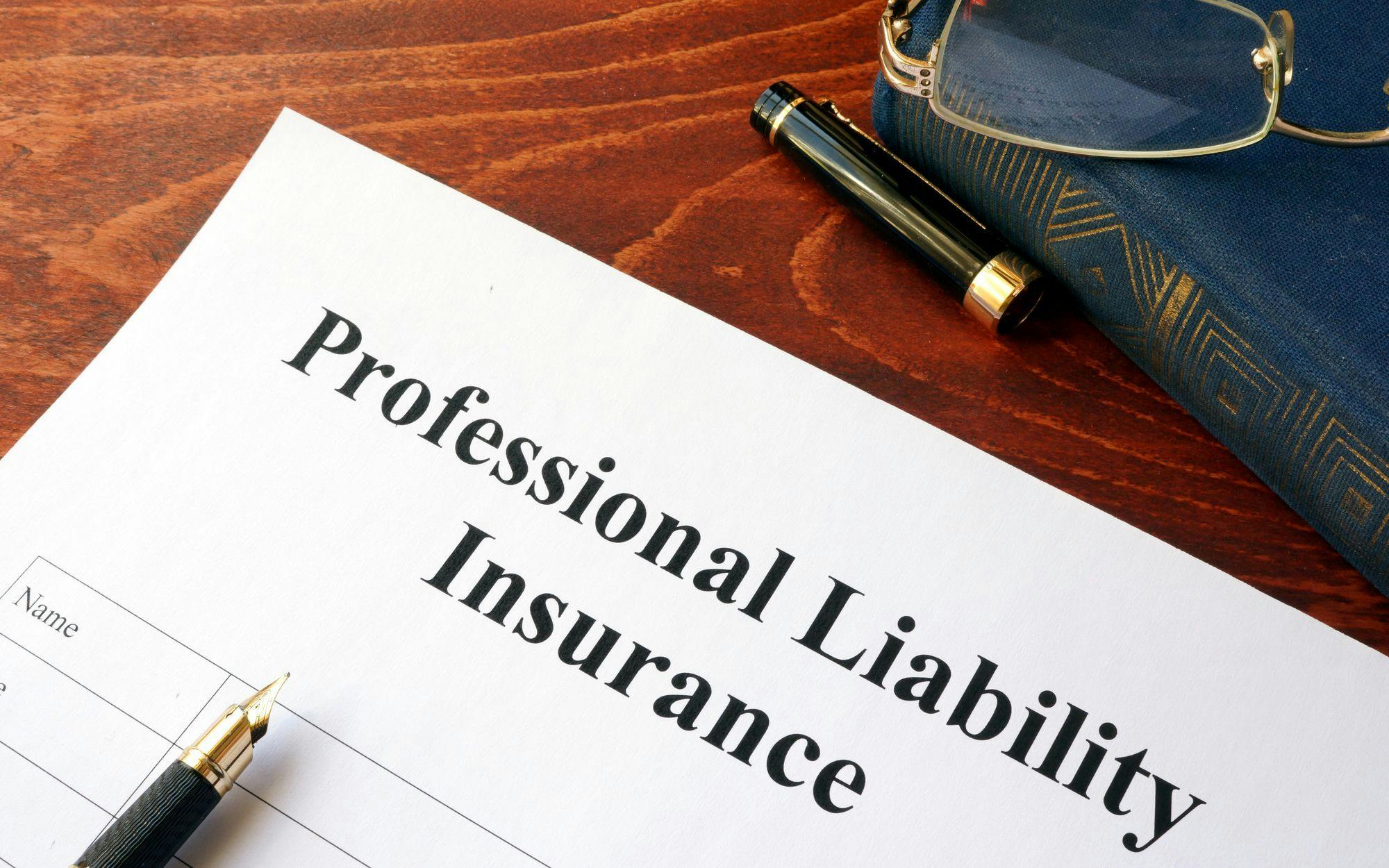
Professional Liability Insurance in Today’s Construction Industry
General liability insurance protects businesses against worksite bodily injury or property damage claims, but what about claims by property owners seeking purely economic damages for negligent design, construction or supervision?
As the lines between construction and design blur, more and more businesses in the building industry need errors and omissions professional liability insurance to protect against these types of claims. But based on misunderstandings about the scope of coverage afforded by commercial general liability policies, a surprising number of industry players either do not have E&O in the first place, or have an E&O approach that fails to provide sufficient protection when a negligence suit arrives.
What exactly is an E&O policy? Whereas a general liability policy covers sudden and unexpected events causing bodily injury or property damage, an E&O policy should cover claims that a business failed to design, estimate, construct or supervise a project in keeping with the standards of the industry. In other words, that the business was negligent.
Property owners, typically the plaintiffs in these negligence actions, will claim substantial money damages based on redesign, rework and delays arising from the alleged negligence. As more companies play dual roles in the design/construction process nowadays, nearly anyone can end up being a defendant in a negligence case. Even if a company is not at fault for the delays in question, the attorneys’ fees necessary to prove that in court can be surprisingly high.
Accordingly, every business in the building industry should at least consider whether they need E&O coverage to complement their CGL. And for construction managers, design-build contractors, architects, engineers, artisan contractors and specialty trades, it is a must.
However, all E&O policies are not created equal. Whether renewing a policy or facing a possible claim under the current policy, it is worthwhile to understand how E&O policies actually work and which provisions insurance companies most often rely on to deny coverage.
How to Know if a Claim Triggers the E&O Policy
A typical E&O policy covers judgments/settlements and defense costs for a “claim arising out of the policyholder’s negligent act, error or omission in rendering professional services.” The concept is simple, but the devil is in the details. The word “claim” always has its own definition in the policy, and may include requirements that the claim be written, that it specifically demands monetary relief, that it be received by a particular category of employee, etc. Think about the form and substance of legal demands received in the past and consider whether they would actually constitute a claim under the company’s policy. A lawsuit naming the company is clearly a claim, but other types of demand documents present plenty of gray area.
The policy will also specifically define “professional services.” Any claim arising from conduct that arguably falls outside that policy definition will most likely be denied. For an engineering firm that only provides straight engineering services on all of its projects, the definition might be straightforward. But for the thousands of companies that offer multiple and different types of services on different jobs (construction managers at risk, for example), a broad definition of “professional services” is vital.
Assuming a Company Meets the Threshold Coverage Requirements, What Exclusions Might Come into Play?
E&O policies contain a series of vague, wordy exclusions that the insurance company might use to deny coverage based on the substance of, timing of or circumstances surrounding a particular claim. Whether negotiating a new policy or analyzing a potential claim under an existing policy, it is vital to understand how these ubiquitous exclusions actually work.
The Prior Knowledge/Late Notice Exclusion
A typical prior knowledge exclusion may lead the insurance company to deny coverage based on late notice if a claim “arises from circumstances which, prior to the policy period, the policyholder might reasonably have expected would be the basis for a claim.” These provisions can prove very contentious because of the intentionally vague language and the fact that policyholders are often aware at some level of an owner’s dissatisfaction before suit is filed. In reality, the pages of a lawsuit are rarely the first place a company learns that the owner has taken issue with the its performance.
So if redesign, rework and the resulting delays are always possible, what must have happened for a policyholder to “reasonably have expected” it would receive an E&O claim? Assume there are complaints of water intrusion at a condo building and the policyholder, a waterproofing consultant, learns that the owner has hired counsel: Is that enough for the policyholder to notify its insurance company (even if doing so might mean higher premiums at its next renewal)? Assume an engineer receives a letter from the owner or general contractor demanding that the engineer redo certain drawings at its own expense. Should the engineer “reasonably have expected” an eventual claim at that point?
The best way to deal with this uncertainty is to know the policy well. Work with the broker to understand how to strike the right balance with regarding to notice issues. If renewal is coming up, try to negotiate a narrower exclusion. If suit has already been filed against the company, think about how to argue that what happened beforehand was business as usual, not a clear indication of things to come.
The Innocent Insured Exception
Policyholders in the building industry are often large businesses with hundreds or thousands of employees. It would be unjust if an entire company was robbed of E&O coverage based on a single employee’s knowledge. “Innocent insured” coverage carves claims out of the prior knowledge exclusion if only low-level employees had prior knowledge of the circumstances later giving rise to the claim. That way, if tradespeople onsite know that there is an issue but it is never conveyed up the chain, the entire business is not penalized.
Innocent insured coverage takes can be tailored to meet policyholders’ needs and may appear in various different parts of an E&O policy. It typically provides that the “knowledge” needed to trigger an exclusion must be known by a director, officer, principal or other risk manager (sometimes referred to as the “control group”). The larger the business, the more important innocent insured coverage can be. Policyholders should work with their brokers to ensure they have the coverage and they understand whose knowledge matters and how to structure internal communications accordingly.
The Interrelated Acts/Claims Exclusion
Interrelated acts conditions identify multiple claims bearing some relationship to one another and purport to authorize the insurance company to consolidate them under one policy year with one limit of liability. By its terms, a typical interrelated acts condition will encompass all claims arising from “acts, errors or omissions that are logically or causally connected by any common fact, circumstance, situation, transaction, event, advice or decision.”
The insurance company may interpret that wordy language much more broadly than expected. Imagine a large academic or commercial building that experiences construction delays based on MEP design issues and then years later suffers damage based on a faultily designed façade. Both lead to claims against a business. Are the claims “logically” connected by a common “transaction” because they both arise from work on the same building? Like prior knowledge exclusions, interrelated acts provisions are the source of much insurance coverage litigation. For example, take the above hypothetical and assume the policy required the claims to be “causally connected,” rather than just “logically or causally connected.” The insurance company might have a much harder time arguing the two proximally and temporally distinct claims have a causal relationship.
If policy renewal is coming up, work with a broker to understand the interrelated acts language in the policy and negotiate for the narrowest language available. If the business has already faced one claim from a project and expects others, think about what type of documentation is needed to prove that the different claims are not sufficiently “connected” to trigger the exclusion.
Company leaders should understand at least the basic mechanics of E&O professional liability policy. Recognizing the potential impact of the exclusions discussed above, and others, can help avoid missteps that would otherwise leave a business exposed to costly, time-consuming negligence actions.
Related stories








